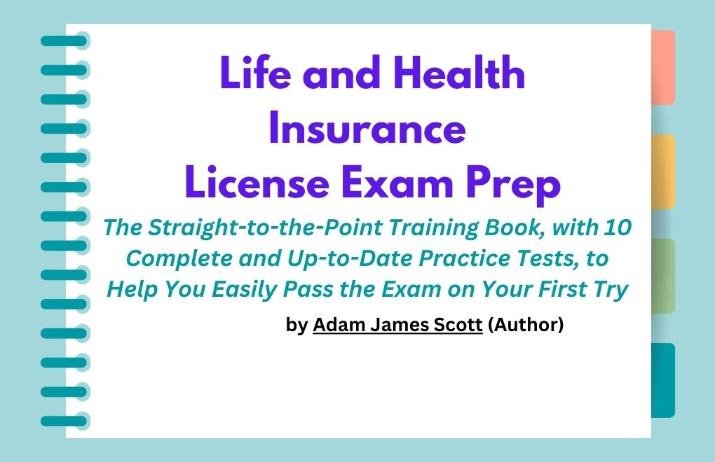Introduction
Healthcare can be complicated and costly. Therapeutic bills can rapidly deplete your reserve funds without legitimate safeguards. Health insurance acts as a basic monetary shield, making a difference in individuals overseeing therapeutic costs and getting to fundamental healthcare administrations.
In the United States, healthcare costs are among the greatest in the world. An unforeseen hospital visit or complex medical treatment can fetch thousands of dollars. Health insurance provides a shelter net, lessening the financial worry of medical care and confirming that people can get treatment when they ought it most.
Contemporary health insurance goes beyond just shielding medical expenses. It’s a comprehensive framework that bolsters preventive care, assists oversee chronic conditions and gives individuals peace of mind. From scheduled check-ups to emergency treatments, health coverage helps the populace stay healthy without confronting financial catastrophe.
Everyone’s healthcare needs are distinctive. A few individuals require frequent medical care, while others are for the most part sound. Health insurance offers adaptive options to match individual circumstances, income levels, and health prerequisites.
This blog post will support you in understanding the fundamentals of health insurance alternatively known as health coverage. We’ll explore numerous forms of coverage, justify key terms, and specify tips for picking the right plan. Whether you’re a young professional, a family, or a senior, understanding health insurance can help you make informed decisions about your healthcare.
What Is Health Insurance?
Health insurance is a contract between you and an insurance company. You pay monthly fees called premiums. In return, the company helps cover your medical expenses. Think of it like a financial safety net that catches you when health problems happen.
How Insurance Works
When you need medical care, health coverage pays part of the cost. You might pay a small amount called a copay. The insurance company covers the rest. This system helps people get care without huge bills.
Types of Health Insurance Plans
Employer-Sponsored Coverage Plans
Most Americans get health coverage through work. About 54% of people use this type of coverage. Employers negotiate group rates that save money for workers. When you start a job, you can sign up during open enrollment.
Benefits
– Lower costs than individual plans
– Employer pays part of the premium
– Easy to sign up
– Often includes dental and vision coverage
Drawbacks
– Limited plan choices
– Lose coverage if you change jobs
– Less flexibility
Individual Health Plans
People without work coverage can buy personal plans. These come from private companies or government marketplaces. Prices depend on your age, location, and health status.
Benefits
- Complete personal control over plan selection
- Not tied to employment
- Portable coverage that moves with you
- Option to choose from multiple insurance providers
- Customize plan to specific health needs
- Access to marketplace subsidies based on income
- Can select plans with preferred doctors
- Flexibility to change plans annually
Drawbacks
- Often more expensive than employer plans
- Higher monthly premiums
- Complex selection process
- No employer contribution to costs
- Higher out-of-pocket expenses
- Limited provider networks
- More paperwork and personal management
- Income verification required for subsidies
- Potential gaps in coverage during transitions
How to Choose
– Compare prices online
– Check covered medical services
– Look at network doctors
– Consider your health needs
– Review out-of-pocket costs
Tired of Dreading the Life & Health Insurance Exam?
Want to pass on your first try and fast-track your career? Whether you’re just getting started or looking to take your qualifications to the next level, this guide is the only resource you need.
Introducing the Life & Health Insurance License Exam Prep, your secret weapon to crush the exam. This isn’t just another boring textbook—it’s a proven system to help you pass with confidence.
Government Health Insurance
Medicare: Comprehensive Healthcare for Seniors
Medicare is a federal health coverage program for people 65 and older. It also covers younger people with specific disabilities or conditions.
Medicare Parts Explained
Part A: Hospital Coverage
- Covers inpatient hospital stays
- Skilled nursing facility care
- Hospice care
- Some home health care
- No monthly premium for most people
- Helps with serious medical situations
Part B: Medical Coverage
- Covers doctor visits
- Outpatient care
- Medical supplies
- Preventive services
- Requires monthly premium
- Helps with routine medical needs
Part C (Medicare Advantage)
- Private coverage alternative
- Combines Part A and Part B
- Often includes prescription drug coverage
- May offer extra benefits
- Managed by private companies
- Can include dental and vision care
Part D: Prescription Drug Coverage
- Helps pay for medications
- Reduces out-of-pocket drug costs
- Covers brand-name and generic drugs
- Separate monthly premium
- Varies by plan and location
Medicaid: Health Coverage for Low-Income Individuals
Medicaid provides free or low-cost health coverage. Each state manages its own program with federal guidelines.
Eligibility Factors
- Income level
- Family size
- Age
- Pregnancy status
- Disability
- Citizenship
Services Typically Covered
- Primary care
- Hospital stays
- Preventive care
- Prescription medicines
- Mental health services
- Dental care (in some states)
- Vision care
- Pregnancy-related services
Student Health Insurance Options
College-Sponsored Insurance
Numerous colleges themselves offer health coverage plans for its students. These plans provide:
- Affordable coverage
- Access to campus health centers
- Tailored for young adults
- Often cheaper than individual plans
Coverage under Parent’s Insurance
Parent’s Insurance plan can cover up their kids until they turn 26. This option:
- Provides continuous coverage
- Saves money
- Works across different states
- Includes emergency care
Marketplace Student Plans
Students can buy individual plans through healthcare marketplaces:
- Income-based subsidies available
- Flexible coverage options
- Comprehensive health benefits
- Good for students without parent coverage
International Student Insurance
Foreign students have special health coverage needs:
- Mandatory for most universities
- Covers medical emergencies
- Includes travel health protection
- Meets visa requirements
Key Considerations for Students
- Compare plan costs
- Check coverage details
- Understand network limitations
- Look for preventive care benefits
- Consider prescription coverage
Ways to Save on Student Insurance
- Use university health centers
- Choose high-deductible plans
- Apply for income-based subsidies
- Stay healthy with preventive care
- Use generic medications
What Does Insurance Cover?
Comprehensive Medical Coverage
Primary Care
- Regular check-ups
- Diagnosis of common conditions
- Treatment for minor illnesses
- Management of chronic diseases
Specialist Services
- Cardiology
- Dermatology
- Neurology
- Orthopedics
- Mental health counseling
Hospital Treatments
- Emergency room visits
- Surgical procedures
- Intensive care
- Overnight stays
- Medical equipment
Diagnostic Services
- Blood tests
- X-rays
- MRI scans
- CT scans
- Laboratory work
Prescription Medications
- Generic drugs
- Brand-name medications
- Long-term treatment drugs
- Short-term illness medicines
Preventive Services Often Covered
Physical Health Screenings
- Annual physical exams
- Blood pressure checks
- Cholesterol screenings
- Diabetes testing
- Cancer screenings
- Heart health evaluations
Immunizations
- Flu shots
- Pneumonia vaccines
- Hepatitis vaccines
- Tetanus boosters
- COVID-19 vaccines
Women’s Health
- Mammograms
- Pap smear tests
- Prenatal care
- Contraception counseling
Men’s Health
- Prostate cancer screening
- Testicular exams
- Heart health checks
Child and Adolescent Care
- Growth monitoring
- Developmental screenings
- Childhood vaccines
- Eye and hearing tests
Understanding Key Insurance Terms
* Premium: Monthly payment for insurance
* Deductible: Amount you pay before insurance helps
* Copay: Fixed fee for each doctor visit
* Coinsurance: Percentage you pay after meeting deductible
* Out-of-pocket maximum: Most you’ll pay in a year
Choosing the Right Plan
Detailed Evaluation Factors
Personal Health Needs
- Current medical conditions
- Prescription medication requirements
- Frequency of doctor visits
- Expected medical procedures
- Family health history
Financial Considerations
- Monthly premium costs
- Deductible amounts
- Out-of-pocket maximums
- Copayment levels
- Coinsurance percentages
Provider Network
- Number of in-network doctors
- Hospital affiliations
- Specialist access
- Geographic coverage
- Telehealth options
Additional Benefits
- Dental coverage
- Vision care
- Mental health services
- Alternative medicine
- Wellness programs
Comparison Strategy
- List personal health requirements
- Calculate potential yearly costs
- Compare multiple plan options
- Check provider networks
- Review additional benefits
- Consider future health possibilities
How to Enroll
Open Enrollment Period
– Happens once a year
– Usually runs from November to December
– Can change or get new insurance
Special Enrollment
You can get insurance outside normal periods after:
– Losing previous coverage
– Getting married
– Having a baby
– Moving to a new state
Conclusion
Health insurance protects your health and finances. It helps people manage medical costs without risking financial disaster. The right coverage ensures you can get care when needed, from routine check-ups to emergency treatments. Take time to understand your options and choose a plan that fits your unique health and financial situation.
Staying informed is key to making smart healthcare decisions. Review your coverage plan annually during open enrollment. Consider your current health, potential future needs, and budget. Remember, good health coverage plan is an investment in your overall well-being, providing peace of mind and access to quality healthcare.
Frequently Asked Questions
How do I know if I need health insurance?
Everyone needs health coverage. Medical costs can be very high without insurance.
Can I change my health coverage plan?
Yes. Switch during open enrollment or after major life changes.
What if I can’t afford insurance?
Check government programs like Medicaid. Many people qualify for low-cost options.
How soon does insurance start?
Depends on the plan. Some start immediately, others have waiting periods.
What documents do I need to get insurance?
Bring ID, proof of income, and sometimes health information.












